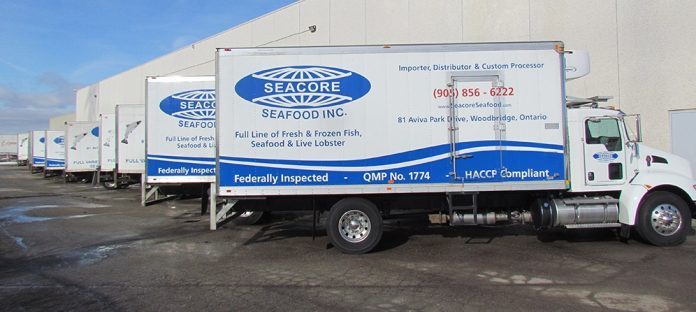Canadian exports of Atlantic salmon — 98 percent of it taken by U.S. buyers — rose by 10,457 tonnes to 96,651 t in 2016, helping the total value of exports increase 38.3 percent.
Of those exports, 86,231 t was fresh, chilled and frozen salmon sold gutted for a total value of CAD839.7 million. Some 9,000 t of fillets were sold for CAD129 million, and “other salmon” — taken to mean steelhead — came in at 1,200 t, good for CAD20.5 million.
Numbers for 2017 are still “secret”, incomplete or not forthcoming, but 70 percent of farmed salmon is now exported, nearly all of it over the U.S. boarder via tractor-trailer.
Retail prices in Canada — at least for canned sockeye salmon, a lunchtime staple — were in October 2017 at about CAD22 a kilogram.
Statistics keepers and the salmon industry now place the country at No. 4 in worldwide farmed-salmon production.
A report compiled for salmon producers and distributed at an aquaculture policy conference in Ottawa this week suggested some provinces were making moves to increase production, and the Canadian government’s financial advisors suggested measures to triple licensed aquaculture.
In Newfoundland, 90 percent of salmon production is still happening in the Bay d’Espoir and Fortune Bay region, although the Premier of Newfoundland announced in September 2017 that the government would support increasing production of salmon to 50,000 t.
In British Columbia, meanwhile, salmon production comes from 127 sites still concentrated in Campbell River, Port Hardy and Tofino.
In general, Canadian seafood revenues rose to USD11.35 billion on more output, stronger prices and new interest, especially in Atlantic salmon and shellfish. This week saw the first ever aquaculture investment from Canada’s largest pension fund.


